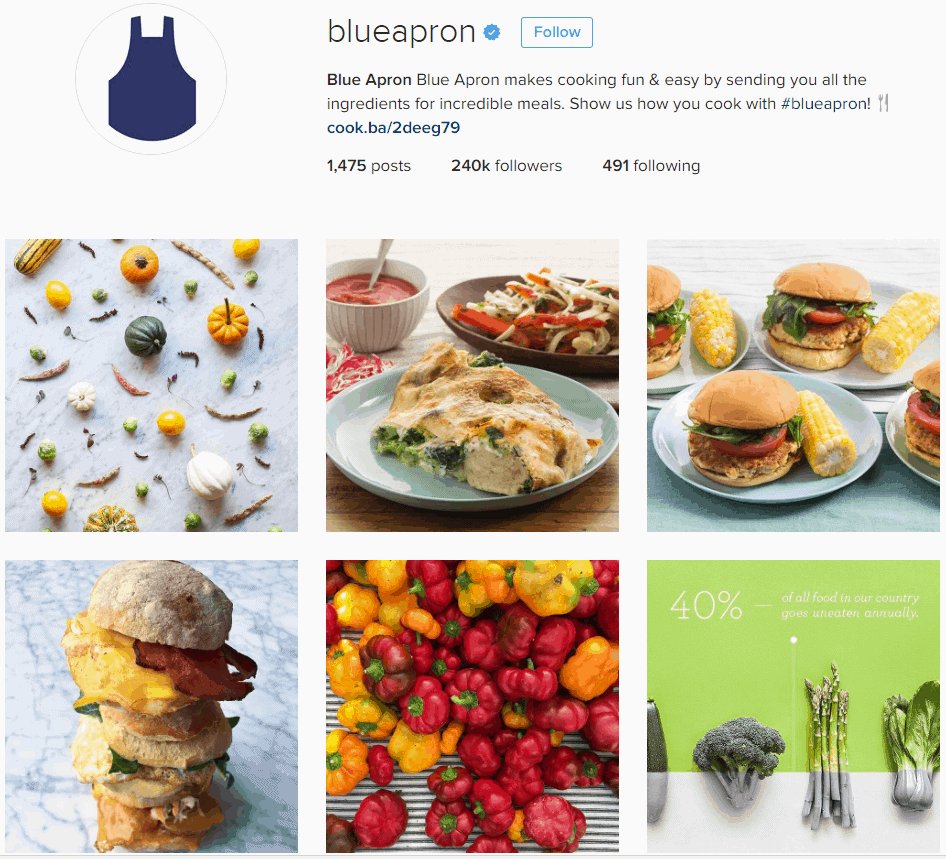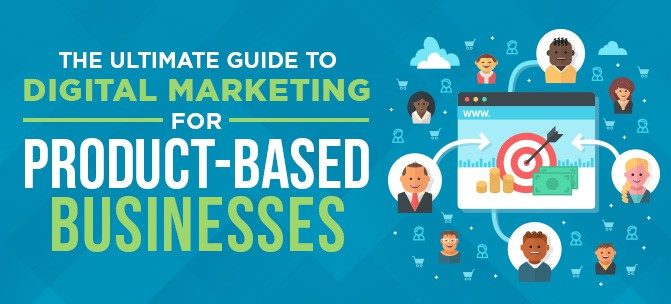In the olden days of marketing – like, 20 years ago – designing a marketing plan for your product-based business was pretty straightforward.
Mostly, you had to show how much better your product was than its competitors. That could mean running a taste test with random consumers and then telling people about it. It could mean paying a celebrity to wear your product to a major event. It could even mean just spending tons of money on commercials in which an actor looked really happy eating/using/looking at your amazing product.
That is somewhat of a simplification, sure, but in general, that was the idea behind product-based marketing before the digital age.
Today, things are different. Consumers are way savvier. They can price-shop for products just like yours across the entire internet, which basically means the entire planet. They’re wary of the hard sell and want to feel in control of the purchasing process.
On the marketer’s side, the channels through which you can reach consumers have exploded. It’s not just TV, radio, and print anymore. You have mobile ads, browser ads, mobile apps, email, social media, live chat, text alerts…you get the idea.
When you add in the fact that the line between service and product is blurring, you see that the game has changed drastically from even 10 years ago, let alone 20. What’s a product-based business to do?
Step 1: Define your digital marketing goals.
One thing hasn’t changed since the first marketer marketed the first product: you have to define your goals before creating a strategy.
Presumably, your ultimate goal is to “sell more products.” That’s great, but it doesn’t help much. You need to get more specific.
Since we’re talking digital marketing, one goal could – and should – be to grow your email list. Growing your email list will give you a larger bank of potential customers to build a relationship with. That will make them more likely to purchase what you’re selling.
Another goal should be building your brand. You want customers to think of your brand above all others when they’re in the market for what you’re selling.
Think of some of the most successful brands out there – Starbucks, for example. They have become so popular with their customers that people say “Let’s get a Starbucks” and even people who have never had Starbucks and have no interest in coffee know what they’re talking about.
So how do you become the Starbucks for your product category? Aside from making sure your product is the best of its kind, one of the most effective ways to do this is to show up on the social media platforms where your ideal customers hang out.
These are just general goals, of course, and you could and should add to them as you need to. Maybe you have a new product that you want to boost sales for, or you’re expanding into another region and want to drum up business there. Whatever the goal might be, it’s almost guaranteed that digital marketing can help you achieve it.
You want customers to think of your brand above all others when they’re in the market for what you’re selling. #brandawareness #digitalmarketing Click To TweetStep 2: Identify the best channels through which to reach your customers.
When coming up with your sales strategy, you probably put together a profile of your ideal customer. Now is the perfect time to pull that out and study it closely.
What you’re trying to figure out is where that ideal customer hangs out online. Now, every product-based business is different. If you sell a highly specialized product, like a medical device, an industrial tool, or something like that, your customers probably gather in very specific industry-related places.
However, if you have a consumer product-based business, then you probably stand the best chance of reaching customers through visual mediums: Instagram and Pinterest, more than Twitter and Facebook.
That’s because, in general, people want to look at what they’re considering buying. This is especially true if you’re selling online either instead of or in addition to brick-and-mortar stores. If you sell men’s fashion, your customers want to see actual men wearing your clothes. If you sell handmade dishes, your customers want to see what those dishes look like on an actual table.
Because of this, it often makes a lot of sense to invest in hiring an excellent photographer to take shots of your product. You can use these shots not only on your social media platforms, but on your website, your e-commerce site if you have one, your blog – the sky’s the limit.
For those items that blur the line between product and service, the visual is no less important.
Take a subscription box like Blue Apron, for example, which lets you sign up for a monthly plan (the service) that gives you a box of ingredients and a recipe (the product) to cook each week. Take a look at the brand’s Instagram feed, full of mouth-watering food pictures:

Source
Of course, there are other channels to consider besides social media platforms. Blogs, remarketing, pay-per-click ads … all of these elements should come together to allow you to reach your customers in multiple places and at multiple touchpoints.
Related post: Why Social Media Marketing Matters for B2B?
Step 3: Build up your email list.
Your email list is a vital tool that will allow you to connect with new customers as well as sustain your relationship with existing ones. Email subscribers are more likely to be buyers, which is why you’ve got to work on that list just like you do your social media presence.
You want to start focusing on it early, if you can, to help build excitement around your brand and your product.
If you already have somewhat of a following, whether that’s through an existing email subscriber list or social media, you want to leverage those existing contacts. Ask if you can add them to your new list to keep them in the loop about your new products.
If you’re starting from scratch, you’ll want to make sure you capture the email addresses of people who visit your site. You can do this by placing an email signup box prominently on your website’s homepage. It may also be a good idea to direct people via social media to a dedicated signup page on your site – this way, you can not only capture email addresses, but also see how your visitors are finding you.
When it comes to the actual emails you’ll be sending out, there are several different types and different strategies you can use. You can read more about this in “10 Expert Tips on Creating Stellar Email Content.”
Step 4: Identify and pitch your influencers.
Influencers are key in any digital marketing strategy, but they can be especially helpful for marketing products.
Birchbox, Madewell, and Gap are just a few brands that have seen major success in working with influencers. The main reason for their success? They chose their influencers extremely carefully.
Influencer marketing for products can be a bit tricky if you’re just starting out. You have to work at creating an authentic, believable relationship between your brand and the influencer – otherwise, you’re doing nothing more than product placement.
A perfect example of a great influencer campaign is Lagavulin’s “My Tales of Whisky.” The whiskey brand wanted to expand its reach among younger people, who traditionally have not been big consumers of single-malt whiskey.
To help them reach this new audience, Lagavulin partnered with Nick Offerman of Parks and Recreation fame. It’s hard to imagine a better match: Offerman’s persona, both in his stand-up and as his Parks and Rec character Ron Swanson, is no-nonsense, masculine to a fault, confident, and – naturally – a whiskey drinker.
The campaign consists of videos featuring Offerman drinking Lagavulin, cooking with Lagavulin, giving Lagavulin-scented gifts for Christmas – there’s even a 45-minute video featuring nothing but Offerman sitting in an armchair next to a fire drinking Lagavulin.
If you want to find an influencer who’s as good a fit for your brand as Offerman is for that whiskey maker, then you have to do two things.
- You have to know who your ideal customer is (or who they are, if you have multiple customer profiles).
- You have to find out which influencers speak to each customer profile. Again, you want to get specific here: There are thousands of mommy bloggers out there, but of those, there may be hundreds who also blog about fashion and beauty – and of those, just a dozen who blog about luxury fashion. If you’re going to maximize effectiveness, you want to keep narrowing the playing field down until you’re targeting one single customer profile. (It’s true that there are exceptions to this rule, but in general, specific is better than general.)
When it comes to finding the right influencers, there are many tools you can use. You can find a list of them in our post “Influencer Marketing from A to Z: A Complete Guide for Businesses.”
One thing you’ve got to consider, in addition, to fit, is reach. How big is this person’s reach? How many followers do they have? Do they get lots of retweets, regrams, etc.? Do their blog posts get picked up by other mainstream sites?
For an influencer relationship to be sustainable, it’s got to be mutually beneficial. #influencermarketing Click To TweetOnce you’ve found the right influencers, you’ve got to engage them with a strong pitch that outlines the benefits for them, as well as for you and your brand. For an influencer relationship to be sustainable, it’s got to be mutually beneficial.
Step 5: Get to work on your content.
As with any business, content marketing is key to getting new visitors to your site, which in turn is key to getting more interest in your product, and eventually turning those interested site visitors into actual customers.
Great content that you give away for free can have a huge impact on your site traffic. According to digital marketer Neil Patel, who cites a report by the Aberdeen Group, companies that use content marketing have conversion rates that are 6 times higher than those for companies that do not use content marketing.
The reason? It’s because content affects:
- Your Google rankings (where on Google’s search page you show up when people search for your product category)
- How many followers you earn on social media
- Your ability to generate links
But you want to do more than just get people to your site so they can make a one-time purchase, and be on their merry way.
You want them to come back over and over again. One way to do that is through your email marketing. Another is to keep generating interesting, useful content for your site.
If you’re stuck on ideas for content that doesn’t just reiterate features of your product, try these on for size:
- Give a pre-launch peek at your latest product.
- Run a contest and give away one of your products as the prize.
- Conduct an interview with a thought leader in your industry.
- Aggregate some of your user-generated content – social media posts that tag your brand, for example – into a “your product out and about” post.
- Write about new developments in your industry at large.
And you can keep the ideas flowing by using the tips in our post “How to Brainstorm Content: 6 Tips to Catalyze Ideas.”
Step 6: Evolve, grow, and pivot as needed.
Every business, not just product-based ones, needs to be able and willing to change as needed if they want to stay competitive today.
If your current marketing tactics aren’t working, try different ones.
If your contest blog posts are getting a lukewarm response, try running the contest on Instagram instead.
If your influencer relationships in a particular industry aren’t getting the results you wanted, refocus your energy into a different industry, or different influencers.
Once you’ve mastered these principles, you’ll be a real digital marketing pro. Trust us – your product, and your business will thank you.







